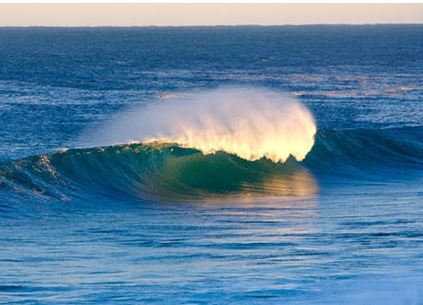>
Reading the Waves
Posted by Admin |December 08, 2012
Have your say join our Surfing Forum
Reading the Waves
Before you head out into the surf, you need to have some basic knowledge of waves and how they work. It's important to never underestimate the power of a wave. While some waves are ideal for beginners other wave types should only be tackled by a seasoned professional.
Waves are influenced by a numbers of things, including the shape of the land.
So what makes a good wave? Local wind conditions ultimately effect wave quality. Offshore winds create smooth, rideable waves for surfing.
There are 3 main types of wave breaks:
Beach breaks: in a beach break, the waves break on a sandbar, making them the perfect type of wave for beginner surfers.
Reef breaks: these waves break over coral and rocks so are not suitable for beginners.
Point breaks: these waves break on dips in the land, and are popular waves for surfers.
3 Forms of a Breaking Wave
Once a wave begins to move towards shallow water the ocean floor influences the shape and speed of the wave. Once the speed of the wave is such that the crest cannot keep up, the wave breaks.
There are 3 forms a breaking wave can take:
Surging: these waves aren't rideable as they roll onto the beach.
Spilling: spilling waves see the crest spill onto the front of the wave, making them perfect for beginners.
Plunging: Plunging waves form a tube, where the face curls into a lip. These are usually reserved for experienced surfers. Beginners are advised to look for gentle plunging waves. If you aren't sure, don't try it until your confidence is up-you can end up badly injured.
What's great about surfing is you never know what type of waves you're going to get. Each one is unique, ensuring you have a different experience, every time you hit the surf. Knowing how to read the waves will ensure you optimise your time surfing.
Have your say join our Surfing Forum
"Just one more"
- anonymous
We hope you enjoy the free infomation as well as the product and website reviews.
